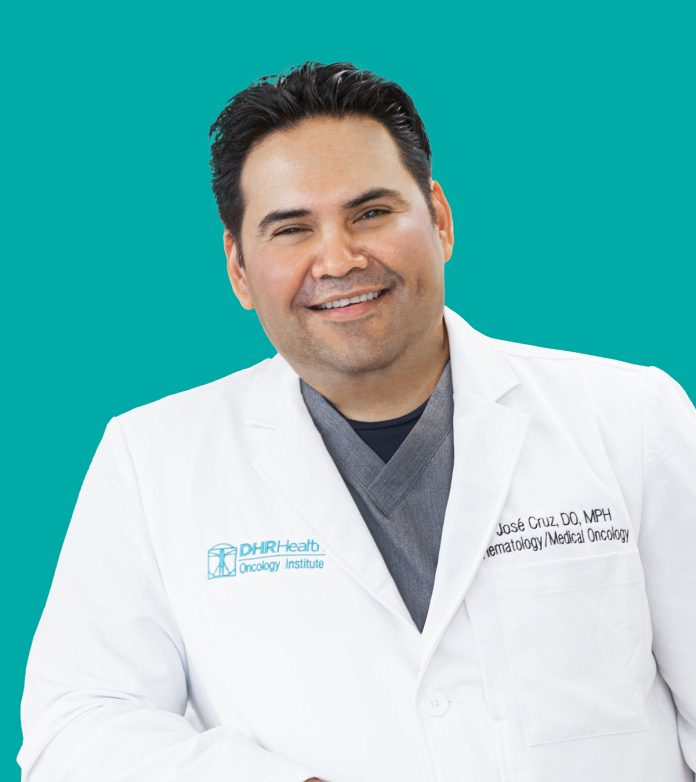
By: Dr. Jose Cruz
DHR Health Oncology Institute
One in five Americans will develop skin cancer in their lifetime. There are three major types of skin cancer: basal cell carcinoma, squamous cell carcinoma, and the most aggressive, melanoma. Skin cancer is the most common and preventable form of cancer in the United States.
Basal Cell Carcinoma
About 3.6 million people are diagnosed with basal cell carcinoma each year. Basal cell carcinoma grows slowly and causes minimal trouble when timely treated. The cancer is found on sun-exposed areas and has the appearance of pink growth and shiny bumps, with rolled edges and possibly a central indentation.
Squamous cell carcinomas
Squamous cell carcinomas grow more rapidly than basal cell carcinomas and are also due to prolonged sun exposure or ultraviolet light. Cancer usually begins as a precancerous lesion called actinic keratosis, a scaly lesion with a stuck-upon appearance that occurs on the face, scalp, and back of hands.
Melanoma
Melanoma only represents 3% of all types of skin cancer but is the most dangerous form because it grows quickly and can spread to other organs. Melanoma appears as an irregular, poorly defined spot or a mole that begins to rapidly change color, size, and shape.
Skin Cancer Risk Factors Sun exposure, UV light, or artificial sunlight from tanning beds are risk factors for developing skin cancers, especially melanoma. Those who are of fair/lighter complexion are at the highest risk. Avoiding the sun can be a challenge in the Rio Grande Valley, especially if you enjoy the outdoors and the beach.
Here are some tips to protect your skin from sun damage/UV light:
- Use sunscreen daily with an SPF of at least 30 but no more than 50 on all sun-exposed areas. Reapply every 2 hours when outdoors.
- Try to do yard work or other outdoor activities before 10:00 a.m. or after 4:00 p.m.
- Do not use tanning beds.
- If outdoors, wear long clothing and a hat to cover your face, ears, and neck
- Wear sunglasses.
Those with a family history of melanoma or multiple moles should consider a visit to a primary care physician or dermatologist for annual head-to-toe skin exams. The good news is that skin cancer, even melanoma, is curable if identified and treated early.
Once diagnosed, treatment can include surgery and/or a combination of radiation, chemotherapy, or immunotherapy. Melanoma has a 99% five-year survival rate in its early stages.
At DHR Health, our surgeons and medical oncologists are committed to providing you with high-quality care. If diagnosed with skin cancer, our team of nurse navigators will work with you to coordinate your evaluations, imaging studies, and physician and treatment visits. Our dedicated team will guide you along the way.
The DHR Health Oncology Institute is located at 2717 Michelangelo Drive in Edinburg. If you or a loved one would like more information about skin cancer and the treatment options available, please call the DHR Health Oncology Institute at (956) 362-2250.




